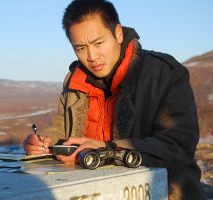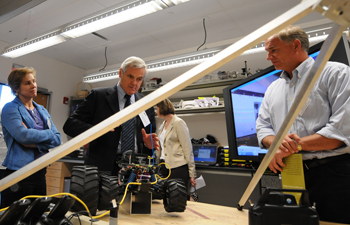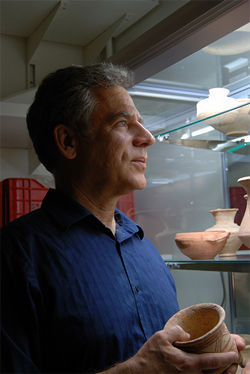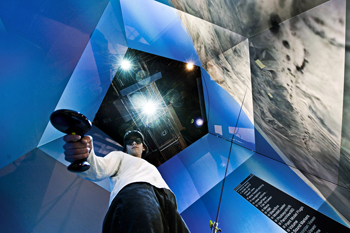Summer of Exploration and Expeditions for UC San Diego Researchers
|
Take Albert Lin. The research scientist is spending the summer in Mongolia , with funding from an initiative of National Geographic Society (NGS) and the Waitt Institute for Discovery. The NGS/Waitt Grants provide up to $15,000 for “exploratory fieldwork that holds promise for new breakthroughs in the natural and social sciences.” In Lin’s case, the exploratory fieldwork involves a survey of a region of Mongolia assumed to contain the lost burial site of Genghis Khan.
At the 2009 National Geographic Explorers Symposium in Washington , D.C., Lin talked about his commitment to protecting the region. A brief video clip from Lin’s talk is available at nationalgeographic.com/blogs/blogwild.
|
Lin and other NGS grantees draw on the technological capabilities of CISA3, which itself is a partnership of the California Institute for Telecommunications and Information Technology (Calit2), Jacobs School of Engineering and UCSD’s Division of Arts & Humanities.
CISA3 Director Maurizio Seracini also attended the annual Explorers Symposium. He is now in his second year as a National Geographic Fellow. Seracini was at the symposium to update fellow explorers on the search for a long-lost mural by Leonardo da Vinci, as well as other projects stemming from a 2008 agreement between NGS and the City of Florence .
|
In October 2008, National Geographic News carried a news article about Levy’s paper published in the Proceedings of the National Academy of Sciences. In that journal, the UC San Diego archaeologist concluded that ongoing excavations at the Jordanian dig site have proved that copper was first produced there almost 300 years earlier than previously thought – dating it to the 10th century B.C.E.
NGS’s Committee for Research and Exploration funded a 1997 expedition, when Levy led an international team of archaeologists, riding on donkeys, across the deserts of Israel and Jordan to reconstruct the region’s trading routes some 6,000 years ago. That expedition became the basis for “Journey to the Copper Age: Archaeology in the Holy Land ,” an exhibition featuring photographs by National Geographic photographer Kenneth Garrett. “Journey to the Copper Age” – which also featured a documentary produced by CISA3 – ended its nine-month run at the San Diego Museum of Man in February 2008.
|
Media Contacts
Doug Ramsey, 858-822-5825, dramsey@ucsd.edu
Related Links
National Geographic
NGS Emerging Explorers
NGS/Waitt Grants
PNAS Video
Journey to the Copper Age
King Solomon’s (Copper) Mines?
Albert Lin Video Clip at NGS
GeoEye MediaRoom





